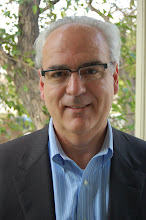J.R. was a victim of severe child abuse, who suffered from profound Post Traumatic Stress Disorder, resulting in dangerous acting out, typically as the evening approached. Yet by day, she successfully attended a local parochial school through funding support by private donors. School achievement helped rebuild her trust in herself and others, and led to a big reduction in abuse-reactive behavior.
J. was admitted on 3/14/05 and discharged on 6/25/08 at the recommendation of Hillsides and confirmed at a Team Decision Making meeting of the Los Angeles County Department of Children and Family Services. (A TDM meeting is an opportunity for all interested parties in the life of the foster care child to convene and address his discharge and treatment plan for a successful replacement.)
She went to the home of her father and stepmother, with whom she had never lived. Her mother is a mentally ill substance abuser. She received Wraparound services in the home by another agency. (Wraparound is a program where the process of creating safe places for a child includes wrapping support services around the child and the entire family to increase the possibility of successful outcomes).
She was in the home for less than a month before she reported that she was sexually abused by her father. The accusation was confirmed by her stepmother. J. was removed to a foster care home, and we have been unable to locate her to find out how she is doing. The father and stepmother, who came on the scene fairly late in J’s stay while at Hillsides, received family therapy prior to J.’s discharge from Hillsides. We also sent a rehabilitation specialist into the home for several months prior to the discharge. Obviously, no one saw this coming.
REFLECTION
Again, no one saw this coming. We would assume that the father had no record of child molestation.
Supervisor’s comments:
This is another case where it would have been very helpful if Hillsides Wraparound could have been involved. We know her and would have been able to offer crisis services when she reported the abuse.
CONCLUSION
1. Family involvement in the treatment process is a key factor.
2. A plan for discharge agreed by all parties, Hillsides, LA DCFS, the child and the family is necessary for a successful transition. (A plan is not going to work if the child or the receiving party is saying they are not ready.)
3. We should consider mandatory supportive services in the home.
4. Once a plan has been agreed upon, there should be some benchmarks set to determine the move-in date.
5. As a general rule, the residential treatment agency should provide Wraparound services to the receiving family where ever possible, since they are the ones who know the child and the family. (This would entail an exception to the Service Provider Areas (SPA) specific structure of the Wraparound program, since most residential treatment centers do not have Wraparound programs in all the SPAs.)
Tuesday, February 3, 2009
Subscribe to:
Posts (Atom)


